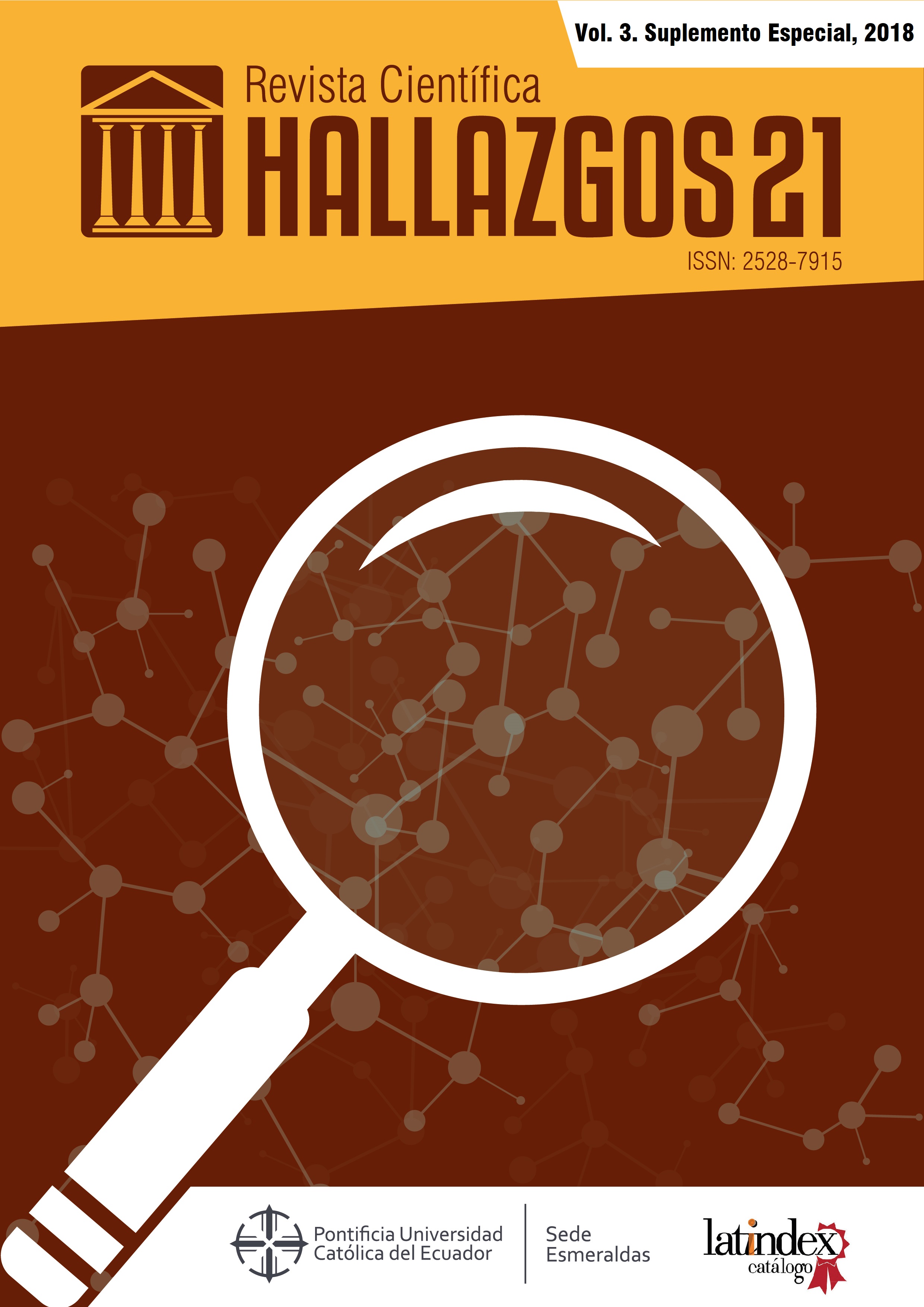Benthic Macroinvertebrates as Bioindicators of Water Quality of a High Andean Ecuadorian Fluvial System
DOI:
https://doi.org/10.69890/hallazgos21.v3i0.234Keywords:
adaptability; bio-indicators; water quality; benthic macroinvertebrates; physical parameters.Abstract
The objective of the present investigation was to determine the quality of the water by means of benthic macroinvertebrates and physical parameters in the microbasin of the Nagsiche River, located west of Salcedo canton, province of Cotopaxi - Ecuador. The samples were collected in 5 monitoring points in duplicate during the months of May-June 2016, in a transect of 10 - 30 m. The study registered 396 individuals, distributed in 8 orders and 15 families; no significant differences were found (p = 0.23) between monitoring points; but there was a 91% correlation between them. The families that stood out were: Baetidae with 67.17%, Chironomidae with 7.83%, followed by Ceratopogonidae with 7.32% and Simuliidae with 7.07%; the remaining others are below 3% representativeness. Water quality through the ABI biological index is regular in the points Pamba Verde (VP) and Puente California (PC), good in the Yana Urcu (YU) point and bad in the points Hacienda la Playa (HP) and Panzaleo ( PANZ). Of the physical variables analyzed, the conductivity and total dissolved solids show perturbation effects, so that water does not enter for human consumption. The variability in the results makes it clear that the anthropic activity in our study area is becoming a threat to the stability of the high Andean mountainous ecosystems.
References
Acosta, R., Ríos, B., Rieradevall, M. & Prat, N., 2009. Propuesta de un protocolo de evaluación de la calidad ecológica de ríos andinos (CERA) y su aplicación a dos cuencas en Ecuador y Perú. Limnetica, 28(1), pp. 35-64.
Álvarez-Cabria, M., González-Ferreras, A. M., Peñas, F. J. & Barquín, J., 2017. Modelling macroinvertebrate and fish biotic indices: From reaches to entire river networks. Science of the Total Environment, Volumen 577, pp. 308-318.
Carmona-Jiménez, J. & Caro-Borrero, A., 2017. The last peri-urban rivers of the Mexico Basin: establishment of potentialreference conditions through the evaluation of ecological quality andbiological indicators. Revista Mexicana de Biodiversidad, 88(2), pp. 425-436.
Carrera, C. & Fierro, K., 2001. Manual de monitoreo: los macroinvertebrados acuáticos como indicadores de la calidad del agua. En: s.l.:s.n., pp. 11-67.
Custodio Villanueva, M. & Chanamé Zapata, F. C., 2016. Analysis of benthic macroinvertebrates biodiversity of Cunas river by means of environmental indicators, Junin-Peru. Scientia Agropecuaria, 7(1), pp. 33 - 44.
Dominguez-Granda, L., Lock, K. & Goethals, P. L., 2011. Using multi-target clustering trees as a tool to predict biological water quality indices based on benthic macroinvertebrates and environmental parameters in the
Chaguana watershed (Ecuador). Ecological Informatics, Volumen 6, p. 303–308.
GAD Salcedo, 2017. Gobierno autonomo desentralizado de Salcedo. [En línea]
Available at: http://www.salcedo.gob.ec/el-canton/
Gómez-Anaya, J. A., Novelo-Gutiérrez, R. & Astudillo-Aldana, M. R., 2017. Effect of domestic and coffee mill discharges on the water quality and the Odonata (Insecta) larval diversity in a mountain cloud forest stream in Veracruz, Mexico. Revista Mexicana de Biodiversidad, Volumen 88, pp. 372-80.
González-Cabrera, O. y otros, 2014. A study of patenting on water and wastewater treatment technologies. Transinformação, 26(3), pp. 339-347.
Herrera, I. J. & Burneo, P. C., 2017. Environmental flow assessment in Andean rivers of Ecuador, case study: Chanlud and El Labrado dams in the Machángara River. Ecohydrology & Hydrobiology, 17(2), pp. 103-112.
Jiméneza, A., Molinaa, M. F. & Le Deunffa, H., 2015. Indigenous peoples and industry water users: Mapping the conflicts worldwide. Aquatic Procedia, Volumen 5, pp. 69-80.
MAE, TULSMA, 2014. TULSMA: Texto Unificado de la Legislación Secundaria del Ministerio del Ambiente, Norma de Calidad Ambiental y de Descarga de Efluentes: Recurso Agua; Libro VI (Anexo I). En: Quito: s.n.
Ramírez, M. F. & Yépes, M. J., 2011. Geopolítica de los Recursos Estratégicos, conflictos por el agua en America Latina. Revista de Relaciones Internacionales, Estrategia y Seguridad, 6(1), pp. 149 - 165.
Simon, H., Kelemen, S. & Begy, R. C., 2017. Anthropic influences on the sedimentation rates of lakes situated in different geographic areas. Journal of Environmental Radioactivity, Volumen 173, pp. 11 - 17.
Young, S. y otros, 2014. Using benthic macroinvertebrate and fish communities as bioindicators of the Tanshui River Basin around the greater Taipei area—multivariate analysis of spatial variation related to levels of water pollution. International journal of environmental research and public health, 11(7), pp. 7116-7143.
Downloads
Published
How to Cite
Issue
Section
License
Los artículos enviados a la Revista Científica Hallazgos21 deberán ser totalmente originales e inéditos.
Los autores son los responsables de los textos y las imágenes incluidas en los artículos y no necesariamente reflejan el pensamiento de la editorial o de la Pontificia Universidad Católica del Ecuador, Sede Esmeraldas (PUCESE).
Los autores disponen cederle a la Revista Científica Hallazgos21 todos los derechos inherentes para la edición, publicación y distribución o divulgación del mismo.
Se autoriza a las revistas firmantes de los acuerdos de Encuentros de Revistas Latinoamericanas para reproducir en parte o totalmente los artículos con la sola mención de la fuente claramente señalada.







